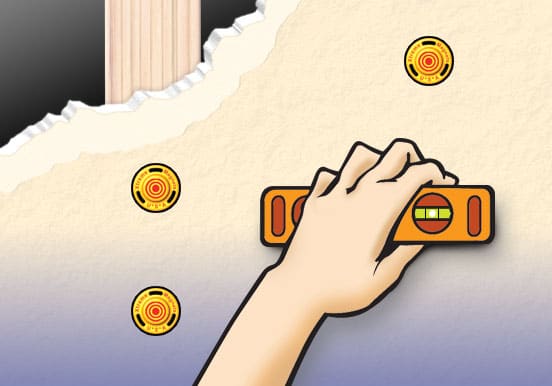Has anyone ever made fun of you asking a question suck as ‘How does a stud finder work’? You have most likely seen many stud finders while searching on the Internet and you probably know that they are hand-held tools and devices that are capable of locating both wood and metal framing studs. However, even though you know what it does, it is likely that you are still thinking to yourself “How does a stud finder work?” Well, it is actually a lot simpler than you would think, and this will teach you exactly how it works.
It honestly depends on what type of stud finder you are using, magnetic stud finders function a lot differently than the other types of stud finders because they are the most basic type. Just like a metal detector, the magnetic stud finder actually locates the studs (support beams within the walls) by detecting the beam itself if it is made out of metal. Although some studs are made out of wood, the magnetic stud finder can still locate them by detecting the metal nails or screws that are lodged in the beams. Despite that it is the most basic type of stud finder, the magnetic versions function well enough to get any job done.

The electronic stud finder functions much differently than its magnetic counterpart. These models use sensors to read the differing density levels within the walls. This is made possible with the help of a capacitor plate, which measures energy in any item’s electrostatic field. Therefore, once the electronic stud finder is in front of the stud, it will notice the difference in density between it and the surrounding empty walls.
Although electronic stud finders are relatively up to date, the newest technology has allowed the production of an even more recent type of stud finder that uses radar. It is actually called a radar stud finder. There are many different models, but in general they all use sound itself in order to recognize the distance between one object and another. Basically, the radar in the stud finder shoots out a radio wave that bounces back once it reaches an object. When pointed at an empty wall, the sound takes longer to bounce back than it does when it is in front of a stud.
Any stud finder will work well, however they all work differently. The main purpose is to find studs within the walls without tearing apart the wall to get to them. By using new technology, and old technology, stud finders have proven to be extremely useful in home improvement and many other aspects. Now you don’t have to ask anyone “how does a stud finder work?” Simply because you know, you will be able to use one for any situation.
